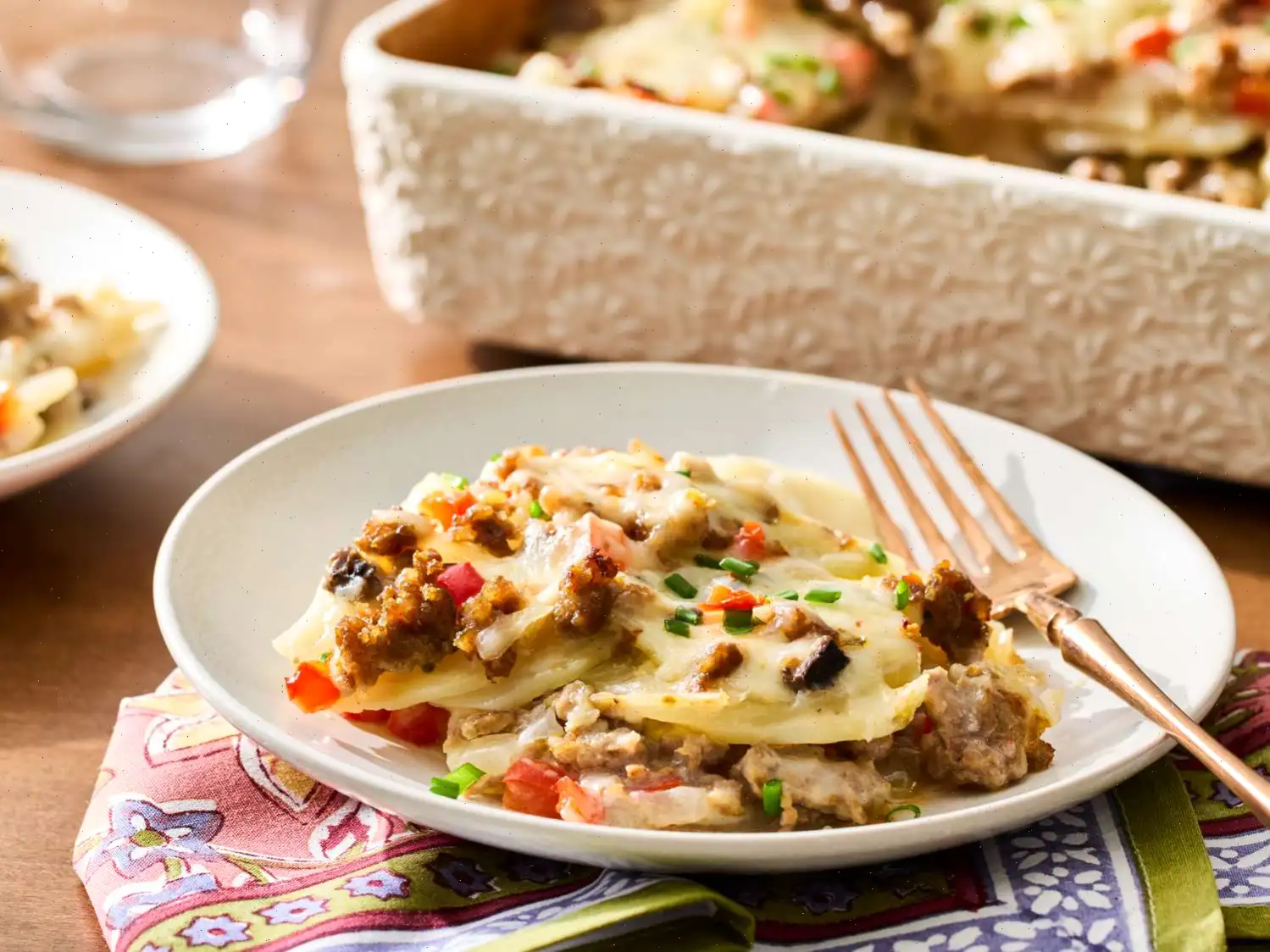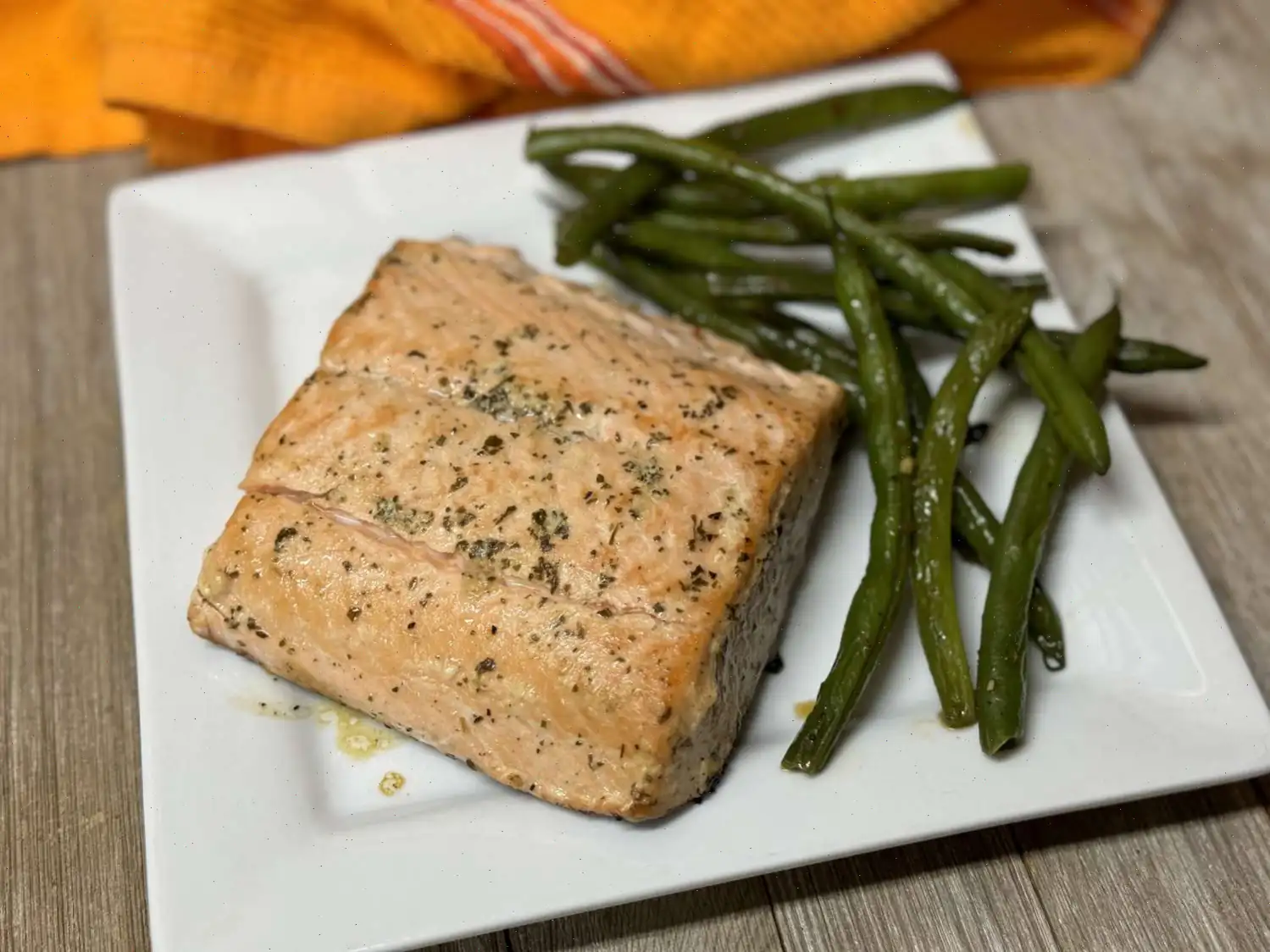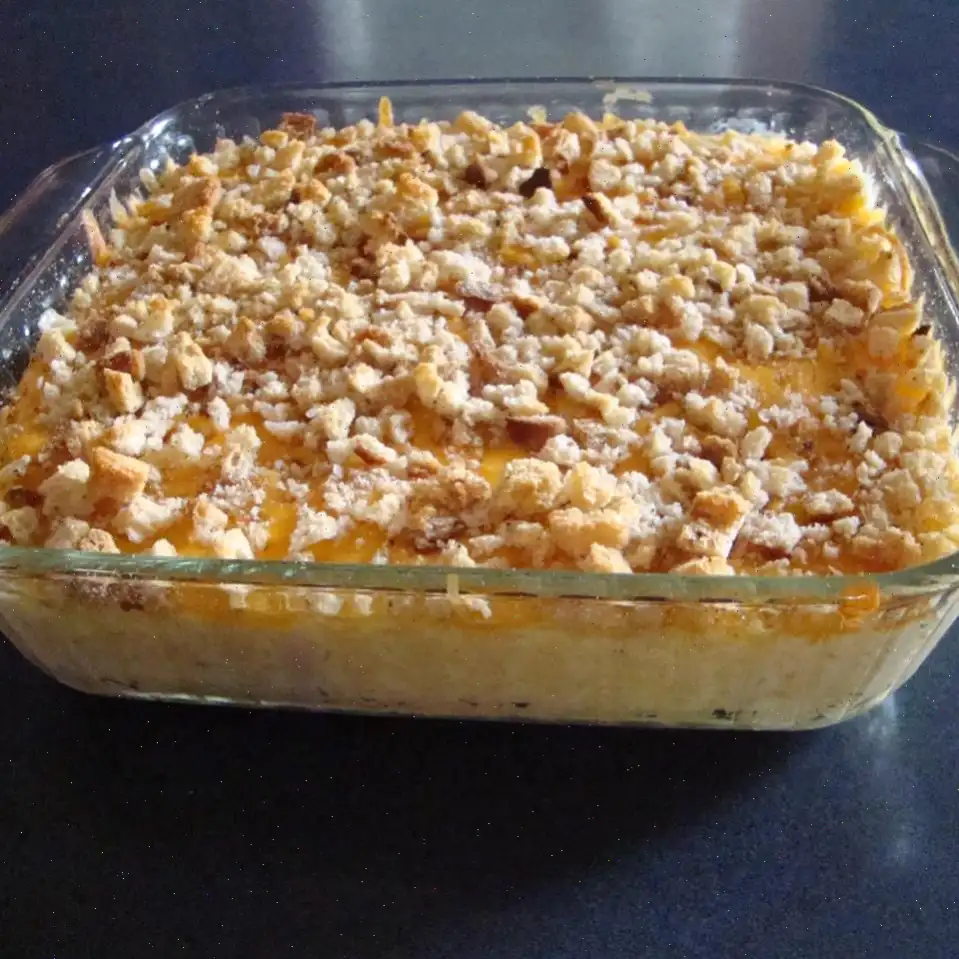
Skillet Lasagna Recipe
Lasagna with Italian Sausage
Servings: 6
Ingredients:
- 1 pound Italian sausage
- 1 (24 ounce) jar marinara sauce or meatless spaghetti sauce
- 8 lasagna noodles
- cup ricotta cheese
- 2 ounces shredded mozzarella cheese (or more to taste)
- 2 ounces grated Parmesan cheese (or more to taste)
- Salt and freshly ground black pepper, to taste (Optional)
- teaspoon garlic powder, or to taste (Optional)
Directions:
- Heat a large skillet over medium-high heat. Add the Italian sausage and cook, breaking it up with a spatula, until it is browned and crumbled, about 5 to 8 minutes. Drain excess grease from the skillet.
- Pour half of the marinara sauce into the skillet with the browned sausage and stir to combine. Break the lasagna noodles into 4 or 5 pieces each, then arrange them on top of the sauce mixture.
- Pour the remaining pasta sauce over the noodles. Stir the mixture, ensuring the noodles are covered with the sauce. Cover the skillet and simmer over medium-low heat until the noodles become soft and tender, about 25 minutes.
- Once the noodles are cooked, add the ricotta cheese and season with garlic powder, salt, and pepper to taste. Stir until the ricotta has melted and is fully incorporated into the sauce.
- Sprinkle the shredded mozzarella and grated Parmesan cheese on top. Cover the skillet and let it sit for 5 minutes, or until the cheese has melted and the dish is bubbly.
Nutrition Facts (per serving):
| Calories | 453 |
| Total Fat | 20g |
| Saturated Fat | 9g |
| Cholesterol | 68mg |
| Sodium | 719mg |
| Total Carbohydrate | 40g |
| Dietary Fiber | 4g |
| Total Sugars | 11g |
| Protein | 26g |
| Vitamin C | 2mg |
| Calcium | 267mg |
| Iron | 3mg |
| Potassium | 573mg |
* Percent Daily Values are based on a 2,000 calorie diet. Your daily values may be higher or lower depending on your calorie needs. Nutrient information may not be available for all ingredients. Please consult a healthcare professional if you have specific dietary requirements.
Skillet lasagna is a simple yet delicious twist on the traditional baked lasagna. This one-pan dish is a modern take on an Italian classic, offering all the flavors of a layered lasagna but with a fraction of the preparation time. Skillet lasagna is made by combining cooked Italian sausage, marinara sauce, broken lasagna noodles, ricotta, mozzarella, and Parmesan cheeses all in a single skillet. It simmers on the stove, resulting in a meal thats as comforting as it is easy to prepare.
Origin and History of Skillet Lasagna
The origins of skillet lasagna can be traced back to the traditional Italian lasagna, which has been enjoyed for centuries. In its earliest form, lasagna was a layered pasta dish filled with meat, cheeses, and sauces. However, the skillet version emerged as a more time-efficient, weeknight-friendly alternative to the labor-intensive baked lasagna. Skillet lasagna first gained popularity in the United States, where the desire for quick and easy comfort food led to many variations of the classic dish. This modern iteration allows home cooks to enjoy the flavors of lasagna without the need to layer and bake in the oven, making it ideal for busy families.
Regional Variations of Skillet Lasagna
While skillet lasagna is typically associated with American cuisine, it is influenced by regional Italian variations of the traditional dish. In Italy, lasagna is often prepared with regional ingredients such as bchamel sauce in the northern regions or with seafood and pesto in coastal areas. The skillet version, however, tends to be a more universal recipe that uses common pantry staples like marinara sauce, ricotta cheese, and Italian sausage. Some variations include adding vegetables like spinach or zucchini, while others may feature a different type of meat, such as ground turkey or beef.
How Skillet Lasagna Differs from Other Pasta Dishes
Skillet lasagna stands apart from other pasta dishes in several ways. Unlike traditional spaghetti or penne dishes, which involve separate steps for cooking the pasta and making the sauce, skillet lasagna combines everything into one pan. This not only saves time but also allows the flavors to meld together as the pasta absorbs the sauce during cooking. Additionally, while baked lasagna requires layering, skillet lasagna breaks the noodles into pieces, which simplifies the cooking process and eliminates the need for an oven. This makes skillet lasagna an accessible option for those who want a hearty, lasagna-style meal without the traditional fuss.
Where Skillet Lasagna is Typically Served
Skillet lasagna is often served in casual dining settings such as family dinners, weeknight meals, and potlucks. It is the perfect dish for busy households or individuals who want a quick, comforting meal without spending hours in the kitchen. This dish is also commonly seen in restaurants that specialize in Italian or American comfort food, where it is usually served with a side salad or garlic bread. Given its ease of preparation, skillet lasagna is often a go-to choice for home cooks looking for a meal that can be enjoyed by the whole family.
Interesting Facts About Skillet Lasagna
- The skillet version of lasagna is also known as "one-pan lasagna" due to its simple, all-in-one cooking process.
- Skillet lasagna allows for creativity with ingredientssome cooks substitute the traditional ricotta for mascarpone, or add spicy sausage for a little heat.
- The dish became increasingly popular during the COVID-19 pandemic, as many people sought out recipes that could be made with pantry staples and minimal effort.
- In some versions, leftover lasagna can be repurposed for breakfast, adding eggs to create a breakfast lasagna bake.
Conclusion
Skillet lasagna is a quick, easy, and delicious alternative to the traditional baked lasagna. With its origins in Italian cuisine and a modern American twist, this dish is perfect for those looking for a comforting meal without the hassle of layering and baking. Whether you serve it for a weeknight dinner, a family gathering, or a casual meal with friends, skillet lasagna is sure to be a crowd-pleaser. The best part? Its customizable to suit your tastes, allowing you to experiment with different meats, cheeses, and seasonings. Give it a tryyou wont be disappointed!









